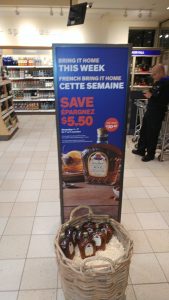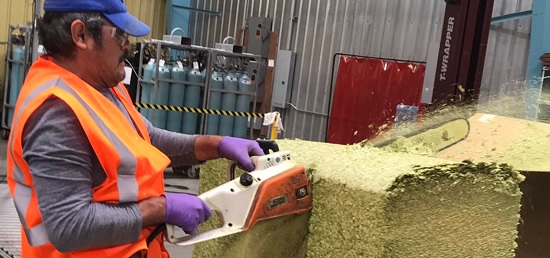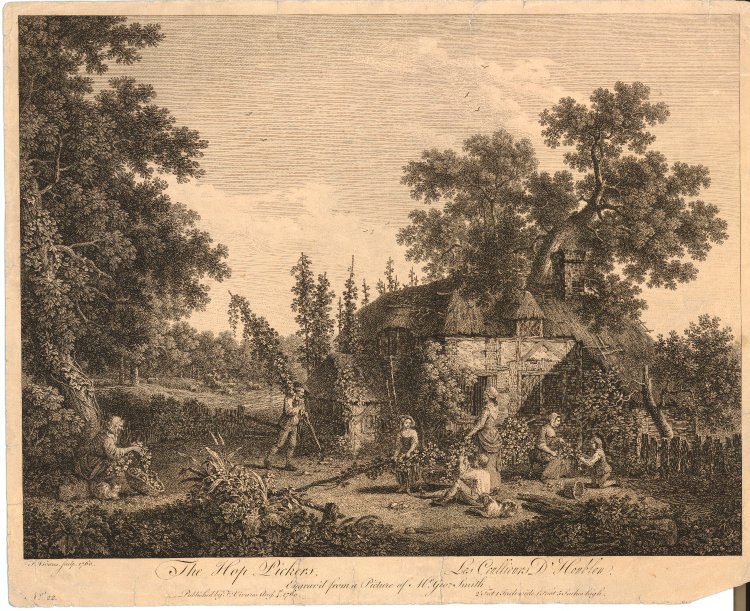There is a certain something in the air. The sound of back to school ads? The fear of seeing a pumpkin ale on a store shelf? Summer is winding up. Harvest has begun, as MacKinnon has pointedly pointed out. I was out there in the trenches… err… ditches in 2018. Looking forward to their Harvest Ale this fall.
Not entirely unconnectedly, we were up in Ottawa last weekend visiting with eldest before it does and one of the best moments was a pint of London Pride. The middle one has been working at a craft brewery this summer and it was very instructive to watch him take a sip. He has been canning contracted and the brewery’s own stock of beer since May, coming back coated with the stuff. He has tried many brands. But he didn’t know what to make of London Pride, asking what that taste was. It wasn’t fruity. It’s an actual ale, I said.
I thought of that when I read this from The Beer Nut on Wednesday in one of his inordinately regular, lengthy review posts:*
My only other Irish beer for today’s post was from YellowBelly, a brown porter named Chewbaccale, in defiance of the Walt Disney Corporation. It is, fittingly, a big lad, at 6% ABV. It’s all about the balance: a touch of roast, but not too much, and a splash of caramel, but not too much of that either. It’s incredibly satisfying to drink, in that way you only get from brown malt. A little weaker would perhaps make it even better, but might also make it Touching the Scald. Either way, I’d love to see lots more beer like this around.
I was also thinking about this when I chatted with Jordan last Friday morning as I sat in the yard on a day off:
Does Beer develop or just change? Not priggery. “Develop” might suggest (i) progression, (ii) intention. As The Beak of the Finch shows, evolution causes both loss + gain. Each are just results of pre-existing qualities that succeed or fail in new contexts…
My point was illustrated by the idea that it is impossible to have a general global English pale ale fad before 2022 as there just aren’t the hops to support it. Fruit-ee-oh favoured hops control the world. Stan had confirmed that peak Fuggles in the US was achieved in 1930. No wonder TBN longs for more traditional British ale flavours. No wonder my son the brewery worker did not recognize the taste. Hmm. Have traditional British styles become so rare abroad that we have to think of them like Belgian beers in the 1970s?
Elsewhere, something called The Suffolk Gazette posted results of a study that suggest that drinking beer makes men more intelligent:
Boffins at Suffolk’s prestigious College of Medicine found men who drink at least five pints of ale a day were far better equipped to hold high-level discussions about important issues of the day. And blokes on the beer were also more adept at completing brain tasks like finishing cryptic crosswords and solving complicated mathematical equations. The surprising findings will be music to the ears of boozers across Britain, who have been insisting beer is good for them since the drink was first invented in 1937.
 Oh, it’s a joke. Speaking of which, Stan posted the picture to the right on Twitter and heard from the crowd: “That store is NO JOKE. He must have $60k+ in bottled beer stock in there.” Which sounded pretty general to me. This sort of thing interested me in 2006. Do people still drop $300 after driving for hours? Do they have kids?
Oh, it’s a joke. Speaking of which, Stan posted the picture to the right on Twitter and heard from the crowd: “That store is NO JOKE. He must have $60k+ in bottled beer stock in there.” Which sounded pretty general to me. This sort of thing interested me in 2006. Do people still drop $300 after driving for hours? Do they have kids?
Did you know that Ontario has a deli meat cold cuts competition every two years? I wan’t that press pass. But the judging took place a couple of weeks ago so I will have to wait until 2021.
The Master Brewers podcast posted an episode entitled “Breathe, Breathe, Breathe, Scream” about brewer Kerry Caldwell who overcame the 34% chance of survival calculated by the hospital after she was injured in 2015 when a brew kettle boiled over at a brewery where she formerly worked. They also discuss improving brew house safety by adding a cut-off mechanism that would avoid her sort of incident.
The Beer Nut** has yet again alerted me to a matter of good ecclesiastic practice. In Cork, Ireland one priest is a bit fed up with folk bringing beer and other personal relics of the deceased to funerals:
Fr Tomas Walsh, who has previously spoken out about Godless Godparents and disrespecting the Holy Eucharist, has criticised behaviour he has seen at funerals. Writing in the weekly Gurranabraher newsletter, Fr Walsh said inappropriate memorabilia is being brought up to the altar at funeral Masses. “Bringing things such as a can of beer, a packet of cigarettes, a remote control, a mobile phone, or a football jersey does not tell us anything uplifting about the person who has died,” Fr Walsh wrote.
My late father, a Protestant minister, confiscated cameras brought out during weddings – walking up the aisle hand outstretched for delivery of the offending article as he continued to speak, leading the service – so I do get Fr Walsh’s point. Seems a bit pagan. Except the remote control. That’s gold.
It’s interesting that the acquisition of a craft brewery by big bad macro is so uninteresting:
AB InBev SA (NYSE: BUD) has agreed to acquire Platform Beer Co., which will join Anheuser-Busch’s Brewers Collective as its newest craft partner. Platform Beer Co is the fastest growing regional brewery in the United States in 2017, known for their diverse portfolio of unique beers and innovative approach. Platform, founded in Cleveland by local entrepreneurs Paul Benner and Justin Carson, began in 2014 as a homebrew-inspired brewery devoted to community outreach and education. Still carrying community values at the core of their business today, Platform is known throughout Ohio for their taproom customer experiences and vast beverage portfolio of award-winning innovative products – creating more than 200 unique beers per year. The brewery’s unparalleled creativity and experimentation has resulted in more than 600 recipes that include a variety of unique seasonals, sours, ciders and fruit ales, barrel-aged beers, and a line of hard seltzer.
“Homebrew-inspired“? Now there is a new nothingness. “…a line of hard seltzer…”??? Hooray for everything! I look forward to maybe three of those 600 brands being discount regional pale ales by 2022.
There. Next week will be the day before the holidays expect the quality to decline… if that is possible. Check in with Boak and Bailey for more news on Saturday and Stan on Monday. The OCBG Podcast should be there, too, on Tuesday so check it out. Have a good weekend!
*Pray for his liver.
**The Double!!!















